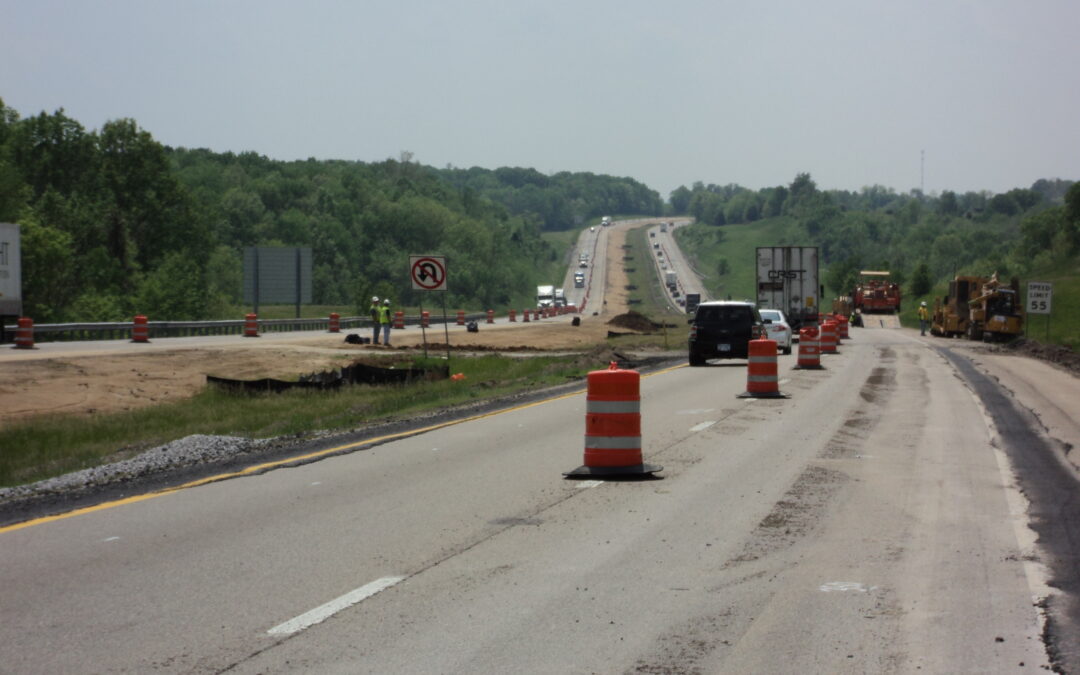After a particularly rainy spring, Eaton Asphalt crews are out in full force on projects across Northern Kentucky. With asphalt paving projects being carried out on highways in Kenton, Boone, Grant and Campbell Counties, as well as projects on Northern Kentucky’s county roads and city streets; chances are you have already seen our crews hard at work this summer (and that’s not even including our crews on commercial projects!).
During these projects traffic diversions and lane closures are unavoidable and necessary to complete the work quickly and effectively. Eaton Asphalt works closely with government agencies to create plans for traffic phases that minimize the impact to the travelling public.
At Eaton Asphalt, as well as all Jurgensen Companies, safety is a priority. Before Construction Season even begins our crews have already been to training for Work Zone Setup and Traffic Flagging certifications. In the early Spring our crews attend a Blitz Day at our corporate office where our employees are given presentations and educated on emerging safety trends. During the season, our crews have toolbox talks before shifts begin to keep safety on the job top of mind.
Our employees are diligently focused on safety and trained to expect the unexpected but that by itself is not enough. We would ask that you check out these helpful tips and keep them in mind the next time you find yourself approaching a work zone:
Slow Down
Each year speeding is found to be the most common cause of traffic accidents. Nearly half of all roadway fatalities result from employees being struck by moving vehicles. Our number one safety recommendation is to SLOW DOWN! Highway work zones will have reduced speed limits posted and higher fines for speeding to encourage drivers to drive through with caution.
Driving conservatively through a work zone means you will still get to your destination while avoiding the increased risk of a crash and injuring yourself or one of our workers.
Be Alert
Orange work signs will be placed prior to any work zone. These signs are placed far enough in advance to give motorists plenty of time to slow down, focus, and be alert before entering the work zone. Work zone signage and spacing is dictated by the MUTCD (Manual of Uniform Traffic Control Devices).
On county and city projects there may be a flagger on site directing traffic. Stop when directed and pay attention to what lane they direct you to travel through. Drive slowly as there will be workers and equipment in the roadway as you move through these work zones.
Drive Defensively
- This is true any time you are driving but it is particularly important to be aware when entering a work zone. It is best to “expect the unexpected” as other vehicles may slow, stop, or change lanes unexpectedly.
- Don’t Follow Too Closely – Leave adequate distance between you and the car in front of you.
- Allow Safe Merging – Traffic can often be limited to one lane in a work zone. Be sure to allow yourself plenty of time to merge and don’t cut off other drivers from merging. The work zone will be slowing you down from your destination already and cutting off another vehicle will not get you there any faster.
- Watch out for Distracted Drivers – Be aware that not everyone may be as alert as you are in the work zone. Watch out for drivers that may be distracted to avoid a potential accident.
Expect Delays
Whether your drive is delayed due to slower speeds or stopped traffic, we understand that travelling through a work zone can be stressful and frustrating. With that being said, our workers have their own families to go home to once their shift is done. Keep this in mind and DO NOT speed through a work zone or disregard traffic instructions under any circumstances.
Disobeying work zone instructions can potentially injure or kill workers. Not to mention, speeding in a work zone has consequences regardless of if you cause an accident like heavy fines and potential jail time.
Keep in mind that a slight delay now will result in a greatly improved road tomorrow. Also, a well maintained road improves safety and driving conditions while reducing wear on your vehicle. Our crews can do some incredible things to transform miles of roadway but they count on you to travel with caution through these work zones.
If you have questions about projects in Northern Kentucky please visit the DrivingNKYProgress page for details and project schedule information.

